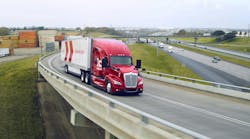Above the protests of the Bush Administration, momentum is building in the Senate to pass a law penalizing states that don't have mandatory seat belt laws.
Senators John Warner (R-VA), Hillary Rodham Clinton (D-NY) and Mike DeWine (R-OH) support passage of the National Highway Safety Act of 2003, which requires states to raise their seat belt usage rate to 90% or enact a primary seat belt law within three years. If neither goal is met states would initially lose 2% of their federal funding, and eventually up to 4%.
A primary seat belt law allows law enforcement officers to stop a driver who is not wearing a seat belt and write a citation. Secondary seat belt laws allow officers to issue seat belt citations only if the driver was stopped for another infraction.
Twenty states and the District of Columbia have primary seat belt laws. “This legislation is … a proven success. Nearly every state that has passed primary enforcement has cut death and injury significantly. Yet today less than half the states have enacted such laws,” said Warner.
DOT officials, in a prepared response, said: “The Administration opposes sanctions and withholding state funds, both of which would jeopardize important state-level safety programs and infrastructure maintenance programs already in place.”
In December, Transportation Secretary Norman Y. Mineta announced a national public-private partnership to combat low safety belt use among the nation's 11-million truck drivers. The program was spurred by a first-ever DOT survey that found only 48% of all commercial vehicle drivers wear safety belts.
Nationally, 79 percent of passenger vehicle drivers wear safety belts. In comparison, the low number of truck drivers buckling up has taken a severe toll. In 2002, of the 588 commercial drivers killed in crashes more than half were not wearing safety belts. Of the 171 drivers who were ejected from their trucks, almost 80 percent of them were not wearing safety belts.


